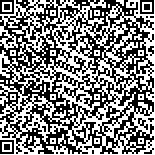| 王 童,周邓婧,李 娜,等.循环肿瘤细胞检测新技术的构建及其在小细胞肺癌诊断中的应用评估[J].肿瘤学杂志,2025,31(5):376-384. |
| 循环肿瘤细胞检测新技术的构建及其在小细胞肺癌诊断中的应用评估 |
| Development and Evaluation of A Novel Detection Technique of Circulating Tumor Cell for Diagnosis of Small Cell Lung Cancer |
| 投稿时间:2024-11-09 |
| DOI:10.11735/j.issn.1671-170X.2025.05.B002 |
|
 |
| 中文关键词: 小细胞肺癌 循环肿瘤细胞 Delta样配体3 磁性纳米球 |
| 英文关键词:small cell lung cancer circulating tumor cell delta-like protein 3 magnetic nanoparticles |
| 基金项目:国家自然科学基金(81802980);湖北省杰出青年科学基金(2023AFA079);白求恩慈善基金会科研项目(STLKY2-087) |
|
| 摘要点击次数: 9 |
| 全文下载次数: 4 |
| 中文摘要: |
| 摘 要:[目的] 探索一种新型的靶向Delta样配体3(delta-like protein 3,DLL3)的磁性纳米球(magnetic nanoparticles,MNs)在小细胞肺癌(small cell lung cancer,SCLC)中循环肿瘤细胞(circulating tumor cell,CTC)的检测效率和特异性,以期提供一种新的诊断方法和靶点。[方法] 通过免疫荧光染色和流式细胞术验证了DLL3在SCLC细胞株中的高表达,并构建了靶向DLL3的MNs,在SCLC细胞系和临床血液样本中测试了其检测CTC的可行性和特异性。此外,在模拟临床样本和实际患者样本中评估了DLL3-MNs的捕获效率和特异性。[结果] DLL3在SCLC细胞株中高表达,而在正常淋巴细胞和非SCLC细胞株中表达较低。在模拟临床样本中,与上皮细胞黏附分子MNs相比,DLL3-MNs显示出更高的特异性(90.6%±1.8% vs 39.2%±2.3%;t=88.335,P<0.05),且免疫荧光显示MNs在捕获CTC过程中未损伤细胞完整性。在13例SCLC患者血样中验证MNs可行性,证明DLL3-MNs与EpCAM-MNs有着相似的捕获效率(2~32 CTC/mL vs 3~31 CTC/mL)。[结论] DLL3-MNs作为一种新型的CTC捕获技术,能够有效且特异性地从SCLC患者血液中捕获CTC,为SCLC的诊断和治疗提供了新的策略。 |
| 英文摘要: |
| Abstract: [Objective] To develop a novel detection technique,delta-like protein 3(DLL3)-targeted magnetic nanoparticles (DLL3-MNs) of circulating tumor cell (CTC) for diagnosis of small cell lung cancer (SCLC) and to evaluate its performance. [Methods] DLL3-MNs were prepared, and its feasibility and specificity in detecting CTC in SCLC cell lines and clinical blood samples were tested. Additionally, the capture efficiency and specificity of DLL3-MNs were evaluated in simulated clinical samples and actual patient samples. [Results] DLL3 was highly expressed in SCLC cell lines but was expressed at low levels in normal lymphocytes and non-SCLC cell lines. In simulated clinical samples, DLL3-MNs demonstrated higher specificity compared to epithelial cell adhesion molecule (EpCAM)-MNs (90.6%±1.8% vs 39.2%±2.3%; t=88.335, P<0.05). Immunofluorescence assays showed that MNs did not compromise the integrity of captured CTC. In blood samples from 13 SCLC patients, DLL3-MNs exhibited similar CTC capture efficiency to EpCAM-MNs (2~32 CTC/mL vs 3~31 CTC/mL). [Conclusion] A novel CTC detection technique DLL3-MNs have been deve-loped, which can effectively and specifically capture CTC from the blood of SCLC patient, offering a new strategy for SCLC diagnosis and treatment. |
|
在线阅读
查看全文 查看/发表评论 下载PDF阅读器 |